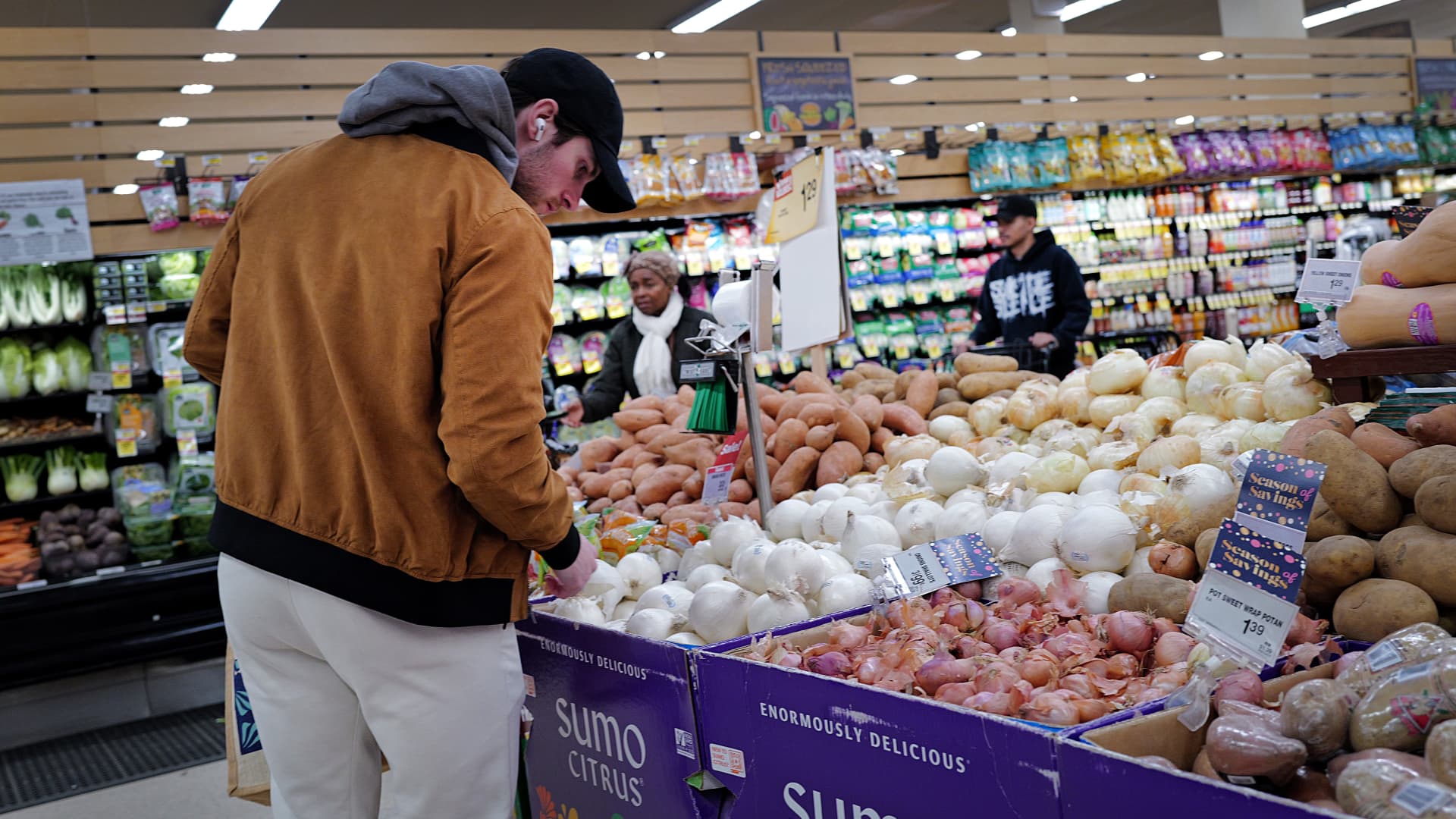Inflation rose in line with expectations in January, according to an important gauge the Federal Reserve uses as it deliberates cutting interest rates.
The personal consumption expenditures price index excluding food and energy costs increased 0.4% for the month and 2.8% from a year ago, as expected according to the Dow Jones consensus estimates. The monthly gain was just 0.1% in December and 2.9% from the year prior.
Headline PCE, including the volatile food and energy categories, increased 0.3% monthly and 2.4% on a 12-month basis, compared with respective estimates for 0.3% and 2.4%, according to the numbers released Thursday by the Commerce Department’s Bureau of Economic Analysis. The respective December numbers were 0.1% and 2.6%.
The moves came amid an unexpected jump in personal income, which rose 1%, well above the forecast for 0.3%. Spending decreased 0.1% versus the estimate for a 0.2% gain.
January’s price rises reflected an ongoing shift to services over goods as the economy normalizes from the Covid pandemic disruptions.
Services prices increased 0.6% on the month while goods fell 0.2%; on a 12-month basis, services rose 3.9% and goods were down 0.5%. Within those categories, food prices accelerated 0.5%, offset by a 1.4% slide in energy. On a year-over-year basis, food was up 1.4% while energy fell 4.9%.
Both the headline and core measures remain ahead of the Fed’s goal for 2% annual inflation, even though the core reading on an annual basis was the lowest since February 2021. While the Fed officially uses the headline measure, policymakers tend to pay more attention to core as a better indication of where long-term trends are heading.
CHICAGO, ILLINOIS – FEBRUARY 13: Customers shop at a grocery store on February 13, 2024 in Chicago, Illinois. Grocery prices are up 0.4% from December and 1.2% over the last year, the slowest annual increase since June 2021. (Photo by Scott Olson/Getty Images)
Scott Olson | Getty Images News | Getty Images
“Overall, [the…
Read the full article here

Leave a Reply